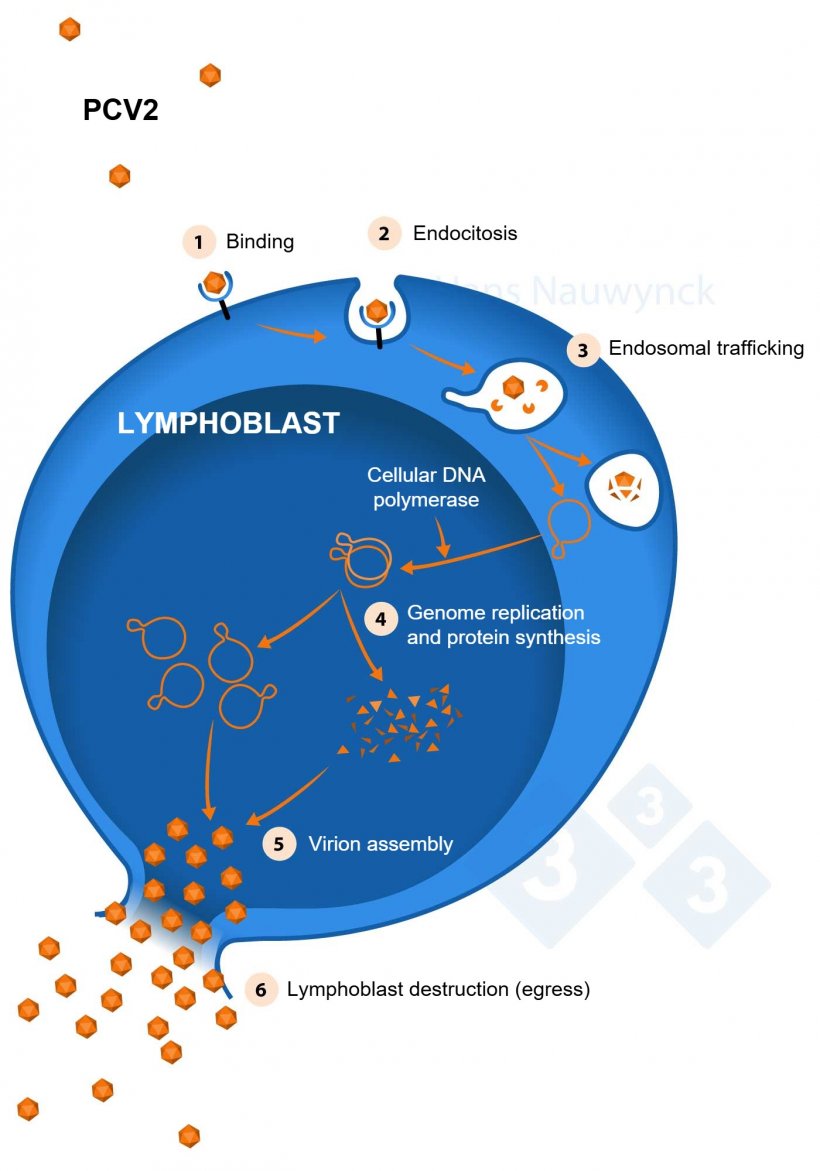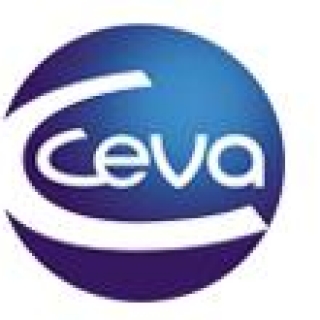"We must look at what happens in cells in relation to what happens in animals and how we can influence this relationship."
As a virologist, he feels professionally fortunate to have been born in an era with many challenging viruses such as PCV2, “cunning” viruses that in a way work in the background and take advantage of the circumstances created in the immune system of pigs by the frequent coinfections present on farms, to cause disease.

PCV2, the small but mighty enemy that relies on a stimulated immune system to replicate
PCV2 is a small virus that is mainly linked to its interaction with two important cells: the lymphoblasts and the monocytes, both extremely important components of the immune response. But before PCV2 can do significant damage, it is important to know that there are some conditions to be met. In a high health animal that is not exposed to other infections, PCV2 has little power. It will replicate at low levels, and that is very good for a virus because in fact the virus does not want to damage the host and just stay under the radar.
Feeding the enemy: more coinfections lead to more lymphoblasts, increasing the chances for PCV2 to replicate
Sometimes as humans we create the circumstances that favor PCV2. Farms are too often overrun with different types of infectious agents. Those multiple coinfections generate a strong stimulation of the immune response including the creation of lymphoblasts, the immune-stimulated lymphocytes, that are the cells in which PCV2 replicates, so the more lymphoblasts are present, the better PCV2 can replicate, and the impact of the virus will become more destructive.

The fundamental role of coinfections in virus replication
We live in a world with increasing numbers of coinfections, not only in farm animals, but in all species - including humans. And that leads to a powerful activation of blastogenesis, so we create a perfect world for some small DNA viruses such as circo- and parvoviruses that depend on proliferating cells (such as lymhoblasts) to replicate.
And this is also happening in humans; nowadays people move around the world at the slightest opportunity for work or pleasure, and they are picking up viruses across the entire globe and bringing them home. And that means automatically more circulation and more coinfections. We can see it in human health, as now people quite frequently get confronted with respiratory pathogens three to four times in a winter, compared to single disease episodes that were most typical in the past.
How can veterinarians use this knowledge about the mechanisms behind PCV2 replication?
Vaccination is key to control PCV2 of course but it is not the only tool. Some other critical factors must be considered. If vets are aware of the mechanisms behind virus replication, that will help them in controlling PCV2 virus and associated diseases. It is extremely important to better control all concurrent viral and bacterial infections on a farm (remember the Madec’s rules), because this will reduce blastogenesis and therefore lower the number of target cells for PCV2, limit its replication and the immunological damage it causes.
Thus, anything that you do to improve the health status of your farm and controlling whatever infectious agent is circulating in the population will help you to better control the circulation of other pathogens that need a stimulated immune system to replicate, such as PCV2, and reduce its impact.
Vaccination for PCV2 is a key tool, but there are some issues with maternal immunity that should be taken into account. PCV2 is not gone by any means, and from time to time it is still giving us problems.





